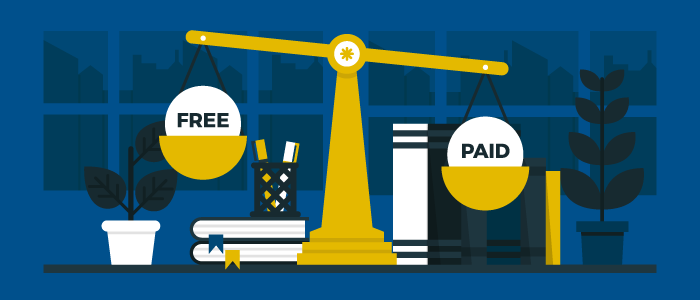Why “free” is a subscription business model of its own and why every magazine should have one
Since the beginning of time, or at least the beginning of consumerism, businesses have been giving things away for free. You’ve probably received free samples in the food court, or free issues of the local newspaper when you first moved into a new home. At your publication, you have likely given away free issues and personally you have likely received free issues of magazines.
In the publishing industry, freemiums (a free premium product) are abundant. A metered paywall is a type of freemium where you’re giving away free access to limited content.
[text_ad]
The one things that all freemiums have in common is that there’s an expectation of a long-tail return on your investment. You’ll produce something for free, so long as it is returning revenue in the long run. The man with the platter of teriyaki on toothpicks in the food court isn’t giving away food for free because he thinks you’re hungry. He’s doing it because the owner of the establishment wants you to enjoy the flavor and order more. You don’t give away a magazine for free—in print, or through your magazine app as a free sample—for fun, you give it away because you want readers to come back for more, and this time with their wallets.
Free subscription business models versus paid business models
Take a few steps up the ladder to the 10,000 foot view and you’ll see every magazine publisher has several subscription business models under their belt. At the very least, a magazine publisher has a magazine subscription business model where they generate sales of magazines. They may also have an event model where they generate revenue through event sales, or a directory model where they sell listings on their site.
And most modern magazine publishers have some version of a free subscription model. The most common is a portal business model. This is where free content exists. It’s search-optimized and indexed by search engines. Many also have a freebie business model where they give away free downloadable products in exchange for an email address. In both scenarios, content is given away in order to attract new customers. Content is abundant and gives those who arrive on the site, an ample amount of content to “sample” before the subscribe to the magazine. Some publishers have a free community business model as well, a forum where users can discuss a niche topic freely.
And that right there is why we always pair free subscription business models with paid ones.
Because if a tree falls in the forest, it does make a sound. But if your magazine exists with no free content to find, it might as well not. Portals attract people to your site through free content that can be shared in social media and beyond, and they direct traffic to your freebies, where you can collect visitor email addresses. From there, you continue to deliver free portal content to the reader until they subscribe to your magazine.
In Harvard Business Review, Vineet Kumar writes, “One of the chief purposes of freemium is to attract new users. If you’re not succeeding with that goal, it probably means that your free offerings are not compelling enough and you need to provide more or better features free. If you’re generating lots of traffic but few people are paying to upgrade, you may have the opposite problem: Your free offerings are too rich, and it’s time to cut back.”
Most publishers recycle content from their premium products into their portals and freebies, but they wait six to twelve months before using any new content so that premium content is only available to paid subscribers. How are you greeting visitors to your website? With an arms-crossed hard paywall, or a kind greeting of free content?

3 replies on “Why We Always Pair Free Subscription Business Models with Paid Magazines”
Thanks Bill Dugan for reminding us of the importance of the freemium method, exactly why it works and should be paired with the paid subs method. It’s easy to forget just why we’re doing it. Excellent post.
Very helpful, thanks. What do you typically recommend for some of the other (non-magazine) business model types, like Library or Classroom?
Hi Rob,
Typically we suggest at least a portal for any subscription model with the idea that written content is what drives SEO traffic. That’s why you’ll find that even brands are populating content portals to drive traffic back to their paid product (courses or otherwise). An broad example is Geico: https://www.geico.com/more/
Hope this helps!
Amanda MacArthur
Managing Editor
Mequoda Daily